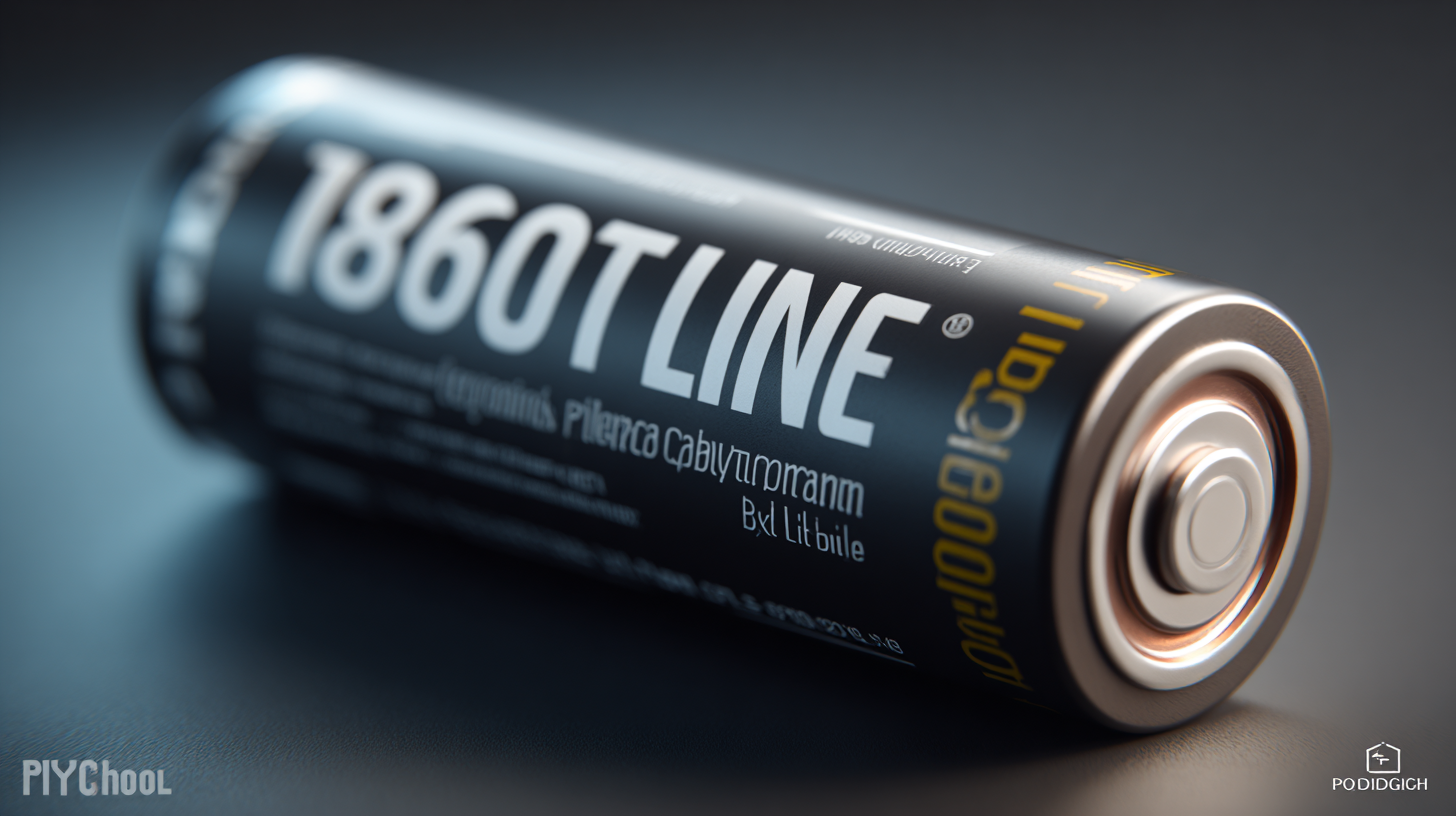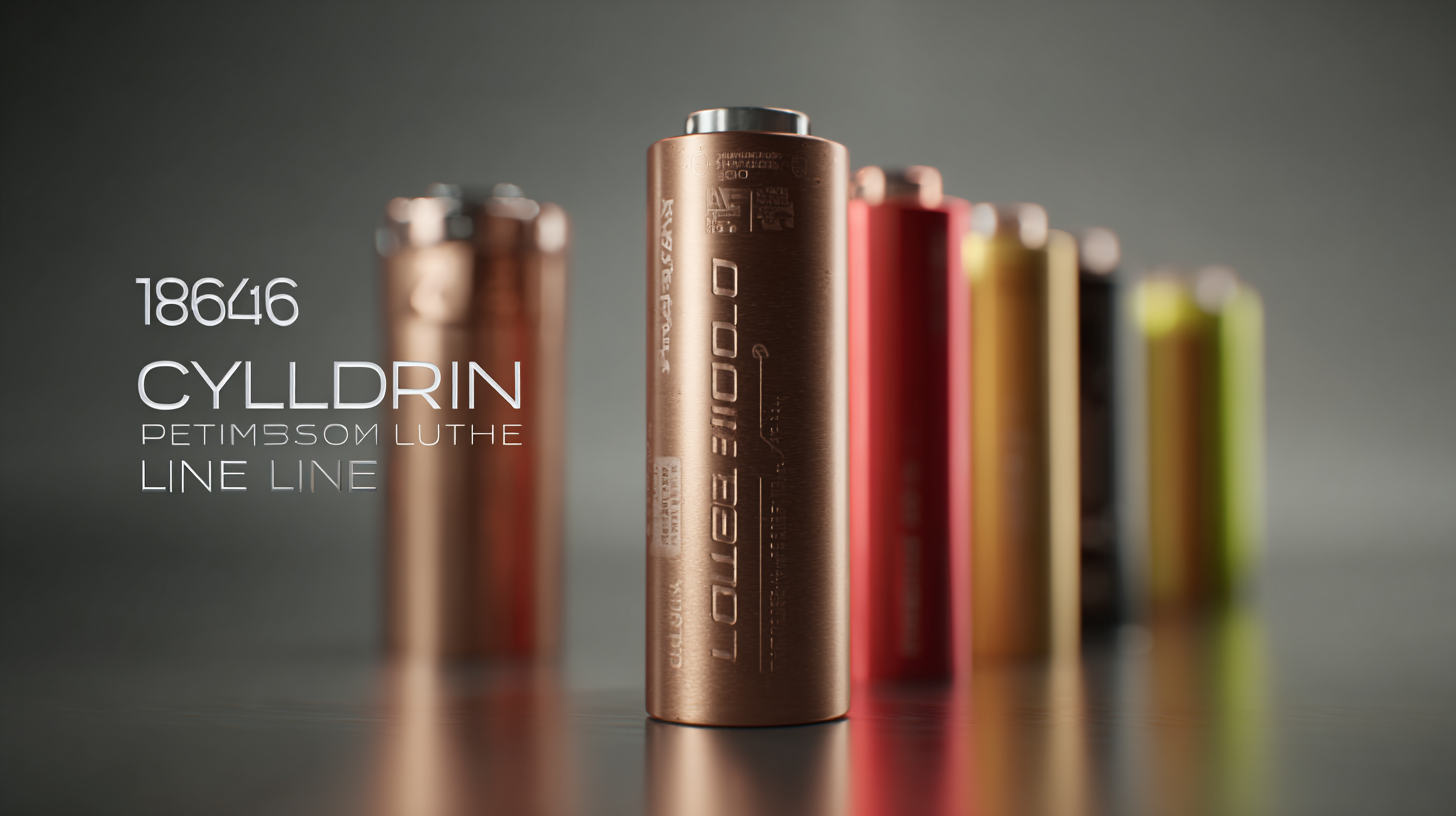Leave Your Message
In the quest for advanced energy solutions, the 18650 Cylindrical Battery Pilot Line has emerged as a focal point for innovation and development within the energy storage industry. As the demand for efficient and powerful batteries continues to grow, understanding the diverse characteristics and applications of various types of batteries becomes essential. This blog aims to explore not only the specific features of the 18650 battery but also presents alternatives that might better serve specific needs and environments. By examining the strengths and limitations of different battery technologies, we can provide valuable insights into selecting the right product for various applications, whether for consumer electronics, electric vehicles, or renewable energy systems. Join us as we navigate through the landscape of battery solutions, offering guidance on how to effectively choose and implement these energy storage options for enhanced efficiency and sustainability.

In recent years, the demand for 18650 cylindrical batteries has surged significantly, driven by their diverse applications across various industries. From electric vehicles to portable electronics, these rechargeable batteries have become a cornerstone of modern energy solutions. As technology continues to advance, the need for efficient and reliable energy storage has never been greater, making the investigation of the 18650 battery's role in today's market particularly relevant.
Manufacturers are increasingly recognizing the importance of developing high-performance alternatives to optimize energy solutions. With a focus on sustainability and efficiency, researchers are exploring new materials and designs that can enhance the energy density and lifespan of these batteries. Additionally, the push for greener energy has led to innovative approaches in recycling and repurposing used batteries, further highlighting the potential for the 18650 format in future applications. As these advancements unfold, the 18650 cylindrical battery remains a focal point for those looking to meet the evolving demands of modern technology.
When exploring alternatives to the highly-regarded 18650 cylindrical battery, it's vital to analyze various battery technologies and their inherent advantages and disadvantages. One promising alternative is the lithium iron phosphate (LiFePO4) battery, which offers enhanced safety and a longer life cycle compared to traditional lithium-ion options. Although these batteries provide robust thermal stability, they tend to have a lower energy density, making them less suitable for applications where lightweight and compact design are paramount.
Another technology gaining traction is the solid-state battery. Unlike conventional lithium-ion batteries, which use liquid electrolytes, solid-state batteries utilize solid materials, resulting in improved safety and potentially greater energy densities. However, the scalability and production costs of solid-state batteries currently pose significant challenges. Comparatively, nickel-metal hydride (NiMH) batteries, with their well-established manufacturing processes, are an economical choice for various applications but fall short in energy density compared to the leading lithium-based technologies. Each of these alternatives presents a unique blend of benefits and limitations, shaping their potential use in future energy solutions.

The exploration of battery alternatives has become increasingly vital as the demand for enhanced energy solutions grows. With the emergence of high-performance batteries like the latest silicon anode cylindrical cells, companies are evaluating energy density in relation to traditional 18650 lithium-ion batteries. This shift highlights the competitive landscape in the energy storage market, where new technologies could redefine benchmarks for performance and efficiency.
Sodium-ion batteries are gaining traction as a cost-effective alternative to lithium-ion systems, with their potential for low production costs and environmental advantages. Current evaluations focus on their energy density capabilities compared to the well-established 18650 batteries. As these alternatives undergo rigorous testing by prominent automakers, the attention on energy density metrics becomes even more critical. Understanding how these battery technologies stack up against one another can provide insights into the future of energy storage and propel advancements in electric vehicle applications, sustainable energy systems, and more.

The battery manufacturing industry is witnessing a transformative shift towards improved efficiency and sustainability. Recent reports indicate that the global rechargeable battery market is projected to reach 1,082 GWh by 2027, bolstered by innovations in battery chemistry and manufacturing processes. One noteworthy advancement is the integration of solid-state electrolytes, which not only enhance energy density but also significantly reduce the risks of fire hazards associated with traditional lithium-ion batteries. This shift is crucial as manufacturers aim to meet the escalating demand for energy storage solutions while minimizing environmental impacts.
To achieve greater sustainability, companies are diversifying their supply chains by seeking ethically sourced raw materials. Research suggests that over 50% of battery-related emissions can be mitigated through sustainable sourcing and recycling practices. This evolving landscape offers opportunities for manufacturers to adopt circular economy principles, effectively reducing waste and promoting resource efficiency.
**Tips:**
1. Consider investing in renewable energy sources for manufacturing processes to further lower carbon footprints.
2. Stay updated on the latest battery technologies to ensure your products remain competitive and environmentally friendly.
3. Collaborate with researchers and industry experts to develop innovative recycling programs for used batteries, contributing to a greener future.
| Battery Type | Capacity (mAh) | Max Discharge Current (A) | Charging Efficiency (%) | Cycle Life (Cycles) | Material Sustainability |
|---|---|---|---|---|---|
| Lithium Nickel Manganese Cobalt Oxide (NMC) | 3000 | 35 | 96 | 1000 | Moderate |
| Lithium Iron Phosphate (LFP) | 2500 | 20 | 92 | 2000 | High |
| Nickel Cobalt Aluminum Oxide (NCA) | 3500 | 30 | 90 | 1200 | Moderate |
| Solid-State Battery | 4000 | 45 | 99 | 3000 | High |
| Lithium Polymer (LiPo) | 2200 | 25 | 87 | 500 | Low |
The future of energy solutions is being shaped significantly by next-generation battery designs, particularly with the emergence of all-solid-state batteries. These innovative batteries are poised to transform energy storage and consumption across various sectors. The primary advantage of solid-state batteries lies in their enhanced safety features. By replacing the traditional liquid electrolytes with solid electrolytes, these batteries eliminate the risk of leakage or combustion, which are often concerned with lithium-ion batteries. This fundamental shift not only improves safety but also increases energy density, allowing for longer usage times and reduced charging frequencies.
As we venture deeper into the next-generation battery market, trends show a relentless pursuit of sustainability and efficiency. The electric vehicle (EV) industry, in particular, is experiencing rapid advancements influenced by innovative design trends that prioritize minimal environmental impact while maximizing performance. With companies striving to develop batteries that go beyond lithium-ion technology, we are witnessing a broadening of the battery frontier, where materials like sodium, lithium-sulfur, and more are coming into play. This diversification is critical in creating a future where energy solutions are not only more efficient but also align with global decarbonization goals, paving the way for a sustainable and resilient power storage landscape.
